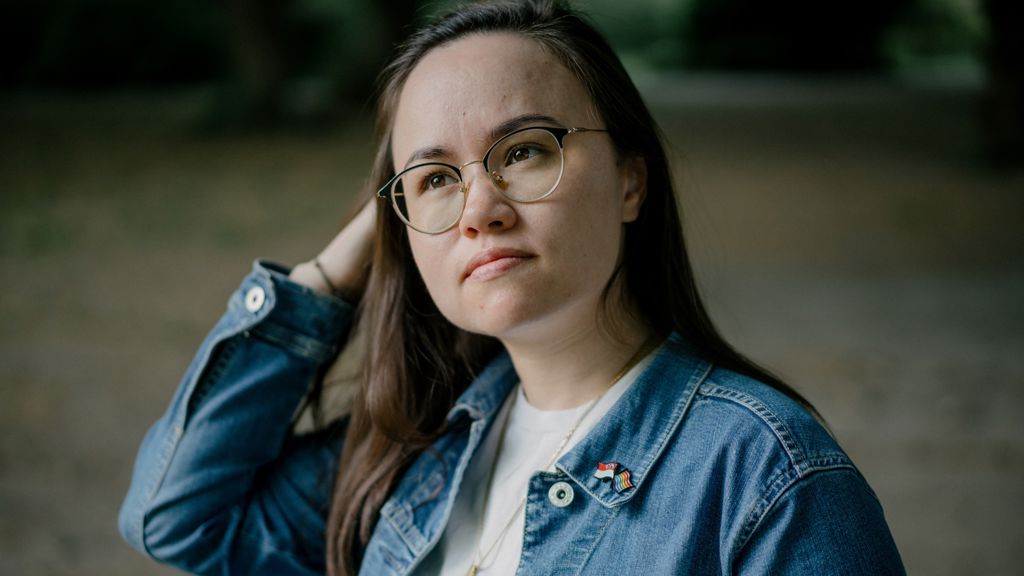Charlotte is now entitled to 26 weeks of maternity leave on pay: “It’s really nice”
The new collective agreement now entitles Charlotte Tan Lange to 26 weeks of maternity leave as a co-mother. “It means a lot to me, it means a lot to my girlfriend, and it means a lot to our child,” she says.

When Finansforbundet and the Danish Employers' Association for the Financial Sector (FA) shook hands in March, the puzzle of maternity leave became much easier for Charlotte Tan Lange and her girlfriend Ina, who are expecting a child in September.
While Ina is the one carrying and giving birth, Charlotte Tan Lange, Senior Analyst at Danske Bank, is going to be co-mother of this little new resident.
And thanks to the deal in March, Charlotte Tan Lange may now take 26 weeks of maternity leave on full pay as a result of the new collective agreement awarding an additional 10 weeks’ leave to co-mothers.
“It’s really nice,” she says.
Wants to be a large part of the child’s start in life
The extra weeks secured by Charlotte Tan Lange for shared maternity leave make it possible for the two women to distribute nappy changes and pram walks more equally between them.
“We are both so eager to become parents and meeting this little new one, who will be taking up a huge part of our lives. And we believe that it’s in our and the child's interest that we are equally involved in the child’s life – especially in the beginning,” says Charlotte Tan Lange.
She adds that there will obviously be some physical differences between them as her girlfriend will be the one carrying and giving birth to their child. And the specific effects thereof may be difficult to predict.
“But we agree that I am just as entitled to spending time with the baby, bonding with it and getting to know it. And I am looking forward to it very much,” says Charlotte Tan Lange, while emphasising that they will evaluate the first period, before they decide definitively how to distribute the remainder of the maternity leave.
Ensures equality and acknowledgement
But they have also considered how the maternity leave may affect their future professional lives.
“My girlfriend and I both have ambitions for our careers, and my girlfriend doesn't want to be away from her job for too long,” says Charlotte Tan Lange and explains that it might have disadvantages being away from your job for too long. You might miss promotions or pay rises for instance.
“Doing it this way, we can share the potential disadvantages too. It isn't fair for her career to suffer automatically.”
Charlotte Tan Lange also feels that it helps to acknowledge her role as co-mother when it is mentioned in black and white in the collective agreement.
“It definitely matters to me. It sends a clear signal that you are considered to be on equal footing. The fact that you are now part of the equation and not just an afterthought down the lines of ‘applicable also to those having the role as a father.’ I find that really nice.”
Registered as “alleged father”
It might be 2023, but change has not occurred everywhere.
For instance, to be acknowledged as the child’s parent, Charlotte Tan Lange had to sign official documents that referred to her as the “alleged father”.
“It's not that I’m offended by it, but I question why it has to be so rigid that the partner of someone expecting a child has to be the father?” she asks.
It therefore pleases her to work in a pioneering sector which is the first to have written the right to maternity/paternity leave of rainbow families into its collective agreement.
Because, aside from giving co-mothers an extended right to paid maternity leave, the new collective agreement also ensures that the rules as of 1 January 2024 will also apply to parents intended to have a parent-like relationship with the child – first and foremost LBGT+ families, which, under the legislation in force, are awarded maternity/paternity leave benefits.
“It might sound like a cliché, but it makes me proud, and I think it’s awesome,” says Charlotte Tan Lange.
The 30-year-old senior analyst says that it does sometimes seem purely symbolic when companies use the rainbow colours incessantly or throw large pride parties.
“Doing this, on the other hand, that’s when it becomes real. It means a lot to me, it means a lot to my girlfriend, and it means a lot to our child.”

The job is a “safe space”
At the same time, she is happy to be working at a place like Danske Bank that supports the LGBT+ agenda. It is evident every day with the many employees who carry around their rainbow lanyards and the bank’s work with diversity and inclusion and the solid backing of the top management.
“It means a lot to me. Perhaps it's naive, but I do feel that if I was to experience something as harassing, they would have my back,” explains Charlotte Tan Lange.
A report from the consultancy company Als Research shows that 19 per cent of LGBT people in 2019 had experienced a negative attitude towards LGBT persons at their workplace. 27 per cent also expressed that they could not be completely open at their workplace. Quite the opposite is true for Charlotte Tan Lange when she goes to work at Danske Bank.
“For me, it’s been a ‘safe space’, and I have never felt I needed to hide it from anyone,” she says.
Wants to send a signal to less confident colleagues
It is also the reason why Charlotte Tan Lange is active in Danske Bank’s rainbow network formed by the employees to improve such things as the conditions for LGBT+ colleagues at the bank.
“It helps to create a better workplace – a workplace where you can otherwise feel safe, living the life you choose with no need to hide it from anyone,” explains Charlotte Tan Lange.
She is not one to hide it herself that she is living with a woman. In fact, she deliberately chooses to be very open about her sexuality at work.
“I do this to send a signal to other members of the LGBTQ+ environment who might not feel as comfortable with being open about it – ‘I am here for you if you need a safe space’,” she says.
An open and honest approach
She first became aware that she was gay in her early twenties. She decided right from the start that her approach would be to give an honest answer if anyone asked, but that she would not be the one bringing it up.
“That’s also my approach now. You won’t be seeing me entering the workplace saying: ‘Hi everyone: I’m gay’. But it happens quite naturally when you start somewhere new and introduce yourself. Then I would purposely say that ‘I live at Frederiksberg with my GIRLfriend, who is an IT principal specialist. Because then everyone will know,” she explains.
She has been met by nothing but support and encouragement from colleagues after she announced that she was soon to be a mother and was going to exercise her new right to paid maternity leave.
“They have been very supportive and happy for me. The only thing they wanted to be absolutely sure about was which one of us was pregnant,” finishes a laughing Charlotte Tan Lange.





